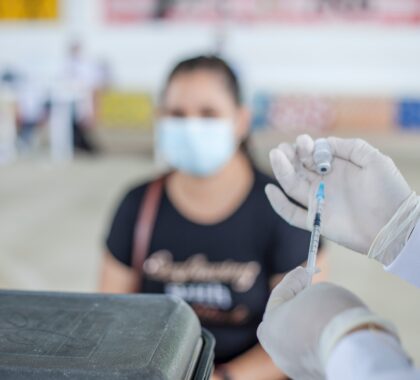Canada Announces Immigration Levels for 2022–2024
The figures are in! Canada just unveiled its Immigration Levels Plan for the years 2022–2024. Between 2022 and 2024, the Canadian government plans to welcome around 430,000 new immigrants every year, the biggest number in the country’s history and over 1% of the country’s total population.
The immigration goals of Canada are to assist refugees, reunite families, and enhance the economy. We’ll look at the Immigration Levels Plan today, as well as the provincial and territorial immigration paths.
Summary of Canada’s Immigration Level Plans
Immigration, Refugees, and Citizenship Canada (IRCC) publishes a new Immigration Levels Plan every year to guide its operations. Canada will aim for the following number of new immigrant landings between 2022 and 2024:
- 2022: 431,645 permanent residents
- 2023: 447,055 permanent residents
- 2024: 451,000 permanent residents

Why Canada Needs New Immigrants
In order to develop its economy, Canada welcomes a large influx of immigrants. Canada not only has one of the oldest populations in the world, but it also has one of the lowest birth rates. This imbalance puts fiscal and economic pressure on the government. Canada has been raising immigration levels since the late 1980s to meet the pressures produced by a lower birth rate and an aging population. This has helped to boost the country’s economy, population, and labor force. For the majority of its population and economic growth, Canada now relies on immigration.
What This Means For International Students
The new Immigration Levels Plan in Canada is fantastic news for overseas students seeking permanent residency in Canada. International students in Canada may be eligible for a work permit after graduation (PGWP). While PGWP holders are allowed to work in Canada for a limited time, this does not guarantee permanent residency. International students who want to stay in Canada permanently must apply for immigration. Express Entry is one option, while others may be eligible for the Provincial Nominee Program (PNP). Because of the high numbers specified under the Immigration Levels Plan, overseas students have a better chance of obtaining permanent residency through these numerous routes.
Immigrant Categories
Below we’ll break down the planned permanent resident admissions by each of the four immigrant categories.
ECONOMIC
- Federal Highly Skilled
- Federal Economic Public Policies
- Federal Business
- Economic Pilots and Caregivers
- Atlantic Immigration Program
- Provincial Nominee Program
- Quebec Skilled Workers and Business
FAMILY
- Spouses, Partners, and Children
- Parents and GrandparentS
REFUGEES AND PROTECTED PERSON
- Protected Person in Canada and Dependents Abroad
- Resettled Refugees – Government-Assisted
- Resettled Refugees – Privately Sponsored
- Resettled Refugees – Blended Visa Office-Referred
HUMANITARIAN AND OTHER
- Humanitarian & Compassionate and Other
Provincial and Territorial Immigration Pathways
Below we’ll explore in more detail what immigration pathways are available by province and territory.
Alberta (AB)
The Alberta Advantage Immigration Program (AAIP) nominates individuals for permanent residence who can fill key job shortages or plan to buy or start a business in Alberta. There are four main streams:
British Columbia (BC)
The BC Provincial Nominee Program (BC PNP) is a pathway for experienced entrepreneurs or skilled foreign workers to move to the province as permanent residents.
Newcomers can apply for the BC PNP through one of three streams:
Manitoba (MB)
The Manitoba Provincial Nominee Program (MPNP) supports educated newcomers with skilled and business experience. You can apply via the:
As students are likely to qualify for the IES category, these are the pathways in this stream:

New Brunswick (NB)
There are three immigration programs specific to New Brunswick:
Newfoundland and Labrador (NL)
The Newfoundland and Labrador Provincial Nominee Program (NLPNP) assists skilled newcomers by nominating individuals for permanent residency. Six streams of the NLPNP fit various candidates’ skills:
Northwest Territories (NT)
The Northwest Territories Nomination Program (NTNP) expedites immigration for students, entrepreneurs, and skilled workers who can fill essential positions that can’t be filled locally. It has two streams:
Nova Scotia (NS)
The Nova Scotia Provincial Nominee Program (NSNP) accelerates immigration for students, entrepreneurs, and skilled workers who can fill important positions in Nova Scotia. These include:
Nunavut (NU)
Nunavut doesn’t have an immigration nomination program. However, interested students can apply through federal programs. Newcomers may apply for federal programs through two streams:
Ontario (ON)
The Ontario Provincial Nominee Program (OINP) supports Ontario’s economy by nominating skilled international workers for immigration. These include:

Prince Edward Island (PEI)
The PEI Provincial Nominee Program (PNP) expedites the immigration process for students, entrepreneurs, and skilled workers coming to PEI. It has three streams:
Quebec (QC)
Quebec’s immigration programs accelerate the immigration process for newcomers while helping to address the province’s employment needs:
Saskatchewan (SK)
The Saskatchewan Immigrant Nominee Program (SINP) speeds up the immigration process for students, entrepreneurs, and skilled workers who can fill essential openings in Saskatchewan’s economy. Multiple programs are available:
Yukon (YT)
Yukon works with the Canadian Government to nominate foreign skilled workers for accelerated permanent residency through the Yukon Nominee Program. Employers must advertise a job locally, and if the opening isn’t filled, the employer can then offer it to an eligible foreign national. Newcomers can’t immigrate through the YNP without receiving a job offer first. There are three YNP streams:
The YNP also runs a Business Nominee Program.
Consider studying abroad in Canada to expand your opportunities while helping to strengthen the country’s economy and labor force.










